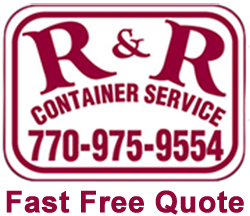Throwing away tires is more than finding a big enough trash can. Tires are special waste. There is often a price and limit to taking tires to the landfill. Read Why.
There are hundreds of stories about massive fires caused by illegally disposed tires. There are hundreds of photos of vacant land covered in tires, that lead to massive fires. Tires are combustible. That is why tires are special waste. Tires themselves are not hazardous, but if a tire is burned it becomes hazardous as air pollution or fire hazard. They can withstand a tremendous amount of heat, but once lit, they are virtually impossible to extinguish.
This was a fire in Savannah in February 2014. The authorities were able to contain the fire, but the rubber would smolder until the viable material was gone. The material, Rubber. When rubber is burned it creates toxic fumes that pollute the atmosphere.
Tires are special waste because they need to be collected and separated from general landfill waste.
This collection process allow appropriate distribution of tires for recycling and reuse.
As an example in 2003, markets for scrap tires were consuming 233 million, or 80.4%, of the 290 million annually generated scrap tires:
- 130 million (44.7%) were used as fuel
- 56 million (19.4%) were recycled or used in civil engineering projects
- 18 million (7.8%) were converted into ground rubber and recycled into products
- 12 million (4.3%) were converted into ground rubber and used in rubber-modified asphalt
- 9 million (3.1%) were exported*
- 6.5 million (2.0 %) were recycled into cut/stamped/punched products
- 3 million (1.7%) were used in agricultural and miscellaneous uses
- 27 million scrap tires (9.3%) were estimated to be disposed of in landfills or monofills. (Source: Rubber Manufacturers Association, 2004.)
The largest use of tires is for fuel:
- Tires produce the same amount of energy as oil and 25% more energy than coal;
- The ash residues from TDF may contain a lower heavy metals content than some coals;
- Results in lower NOx emissions when compared to many US coals, particularly the high-sulfur coals.
The second highest is for civil engineering projects:
- Subgrade Fill and Embankments: Construction
- Backfill for Walls and Bridge Abutments
- Subgrade Insulation for Roads
- Landfills: construction materials
- Septic System Drain Fields: constructions material
- Other Uses
- Playground surface material
- Gravel substitute
- Drainage around building foundations and building foundation insulation
- Erosion control/rainwater runoff barriers (whole tires)
- Wetlands/marsh establishment (whole tires)
- Crash barriers around race tracks (whole tires)
- Boat bumpers at marinas (whole tires)
DIY Cozy Home has an article on 25 Awesome Ideas for Recycling Tires at Home.


